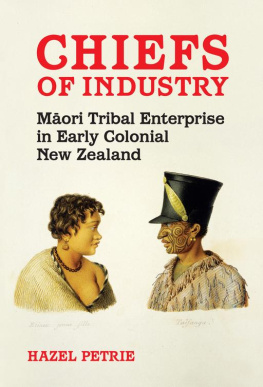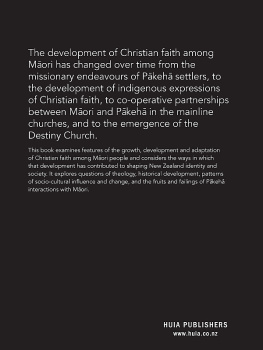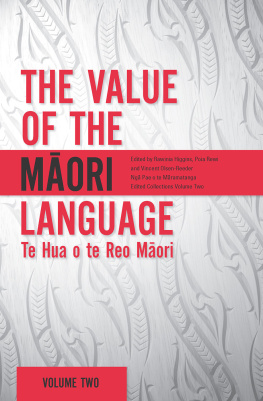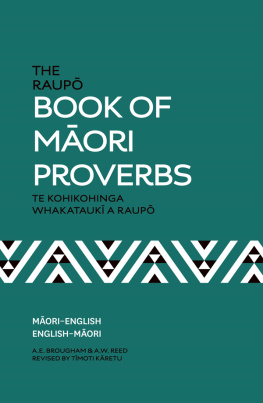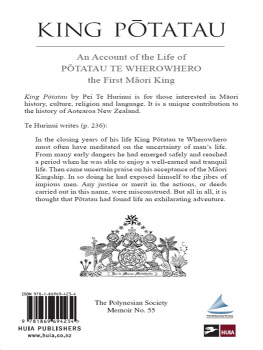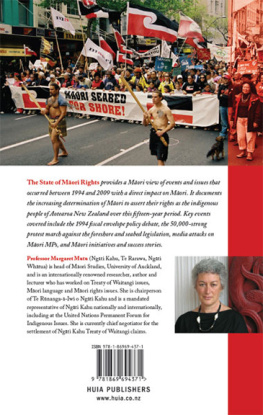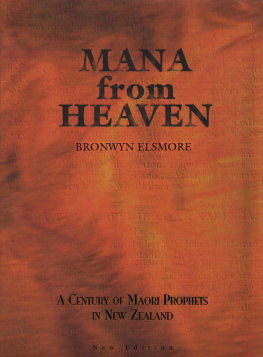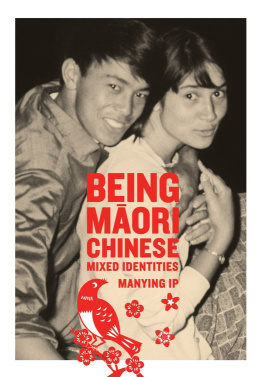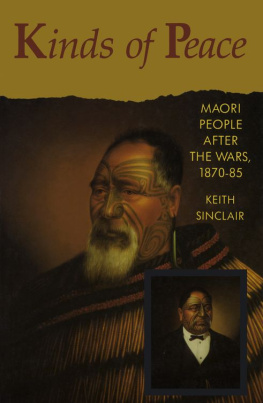Chiefs of Industry contains a section headed the burden of debt. My debts are of a different kind but they have accumulated very substantially during the books long gestation. So very many people have contributed along the way that a full roll call would require another book. However, to Ngapare Hopa and Jane McRae, who encouraged and coaxed me, e matat ana taku mihi. To the staff of the Mori studies Department at the University of Auckland, who passed on their knowledge and honed my meagre skills, to my good friends and colleagues, Lyn Carter, Tane Mokena, Susan Healy, Yvonne sutherland, verity smith, and Te Aroha Rountree I am ever grateful for your insights, your friendship, and good humour. Ng mihi mahana ki a koutou. My considerable gratitude also goes to Judith Binney, Paul Monin, Grant Young, Amiria Henare and to others I have not had the pleasure of meeting, including Te Onehou Phillis, Ian Jonson, and Harold Kidd who generously shared their knowledge and research. To the many staff of the University of Auckland Library, to Donald Kerr, the staff of Auckland City Librarys special Collections, Auckland War Memorial Museum Library, Alexander Turnbull Library, Whanganui Regional Museum, Te Awamutu Museum, Jane Maunsell of Whakatane District Museum and Gallery, Bridget Wellwood of south Taranaki Museum, Brother Gerard Hogg of Marist Archives in Wellington, and many others throughout New Zealand, who went out of their way to assist my information gathering.
Special thanks must go to Manuka Henare who contributed in many ways from the beginning and to the Mira szszy Research Centre and University of Aucklands Business school for a post-doctoral fellowship which has allowed me to complete this book while in full-time employment. Thanks also to the Historical Branch, Ministry of Culture and Heritage for their financial assistance in the final publication and, on the final leg of its journey, to Auckland University Press. Elizabeth Caffin, Anna Hodge, Katrina Duncan, Christine OBrien, Annie irving, and Mike Wagg patiently prepared Chiefs of Industry to finally leave home.
Above all, however, I pay tribute to the enduring support of my husband Tony, my sons, Karl and Dylan, and my father-in-law Ian Petrie who never faltered in their enthusiasm and patience throughout the last seven years. And to them, yes, it has only been seven years.
B ORN OF CURIOSITY, THIS BOOK HAS GROWN OUT OF MY DOCTORAL thesis which looked particularly at two capital-intensive enterprises operated by Mori entrepreneurs during the mid-nineteenth century. Although it is widely recognised that Mori played leading roles in the flourmilling and coastal shipping industries during this period, there have been few serious studies of either. It is odd that this should be so as the topic offers opportunities to consider a number of intriguing questions. Why did Mori feature so strongly in these industries? And how did Mori society adapt to accommodate the acquisition of such capital-intensive investments? Mori ships and flourmills are generally referred to as having been communally owned but what did that actually mean? How did communal ownership actually work? How was the capital required to purchase these assets raised and, if not all members of the community were able to contribute equally, did that affect the level of benefit individuals derived from the investment? Faced with many questions and uncertain as to whether any could be answered, I set out to investigate the phenomenon of tribally owned shipping and flourmilling. In particular, I hoped to learn something of what Mori were thinking when they invested in these enterprises. What were their motivations and what did they hope to achieve?
It has sometimes been suggested that a lack of records must assign the phenomenon of Mori engagement in these industries to the realms of the unknowable, but this has proved not to be the case. The problem turned out to be less an absence of sources, than one of their diverse, scattered locations. A broad range of records was mined in both English and Mori language, many of them created at the time and by those involved in these enterprises, which yielded important clues to the variety of forces that led communities to invest in these industries. Mori voices are particularly important for understanding their motivations but English-language sources help to make sense of the different attitudes among contemporary Pkeh (non-Mori). Some Pkeh keenly encouraged Mori to engage in wheat growing, flourmilling, and shipping, while others were more ambivalent or even hostile toward Mori commercial pursuits.
However, while exploring a number of rich veins of archival gold, some general themes emerged that were not consistent with the existing literature relating to Mori flourmilling and ship-owning. Among those themes was a tendency for communities to pool their resources in purchasing these assets contrary to the widely held view that the competitive aspects of mana prevented different tribal groups from co-operating in that way. There has also been a tendency to characterise these enterprises as less than serious undertakings as mere status symbols a means of keeping up with the tribe next door, so to speak, or as passing fads, driven by a love of novelty. These ideas, which also suggest that Mori purchased too many, overly large flourmills and ships, imply that they could not have been viable commercial concerns and provide a plausible explanation for the downfall, not only of these enterprises, but also of the Mori economy more generally from the late 1850s. But this book also questions whether these explanations make sense. Why would communities waste money on unnecessary or over-expensive plant that was not going to improve their standard of living? Was the drive to acquire and bolster mana a self-destructive one? it eventually became clear that the views of two missionaries in particular, Benjamin Ashwell and Thomas Chapman, have had an unwarranted influence on historiography to date and, as a result, some far more logical rationales for Mori engagement in these enterprises have been obscured.

